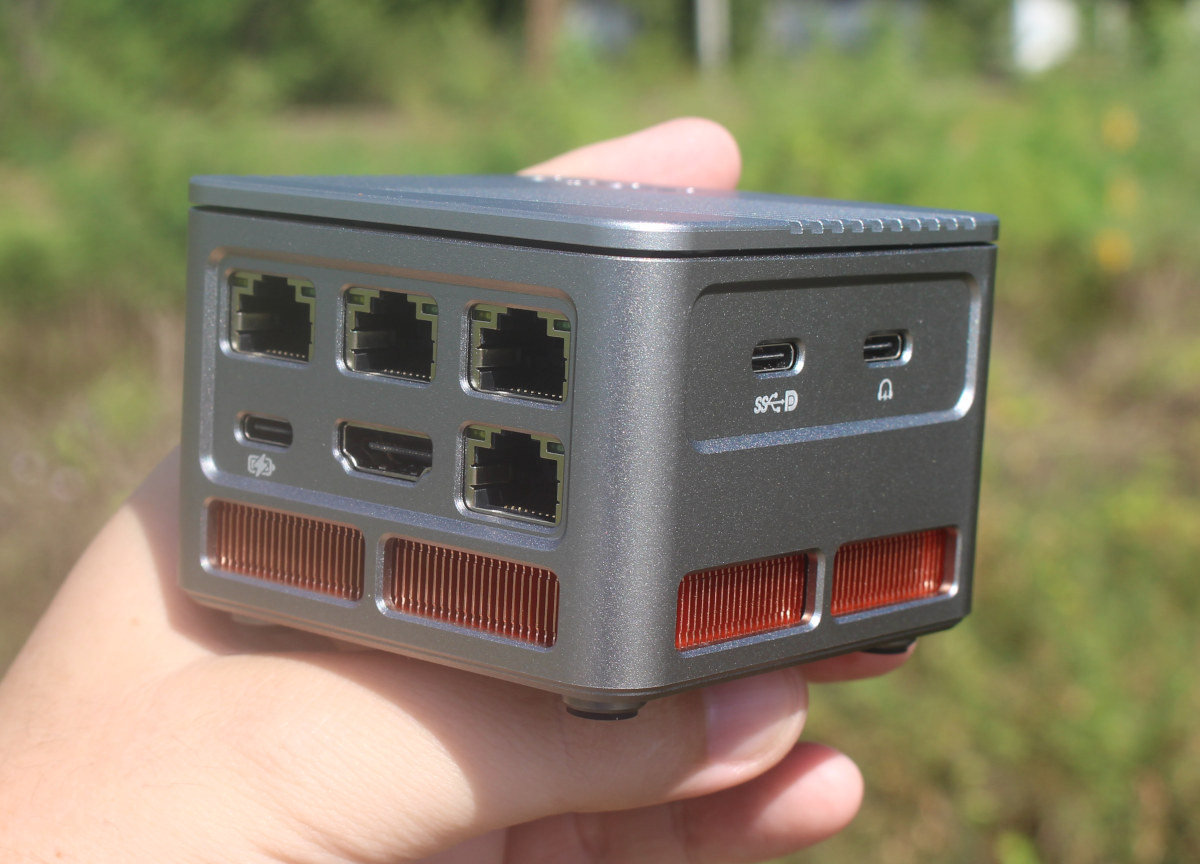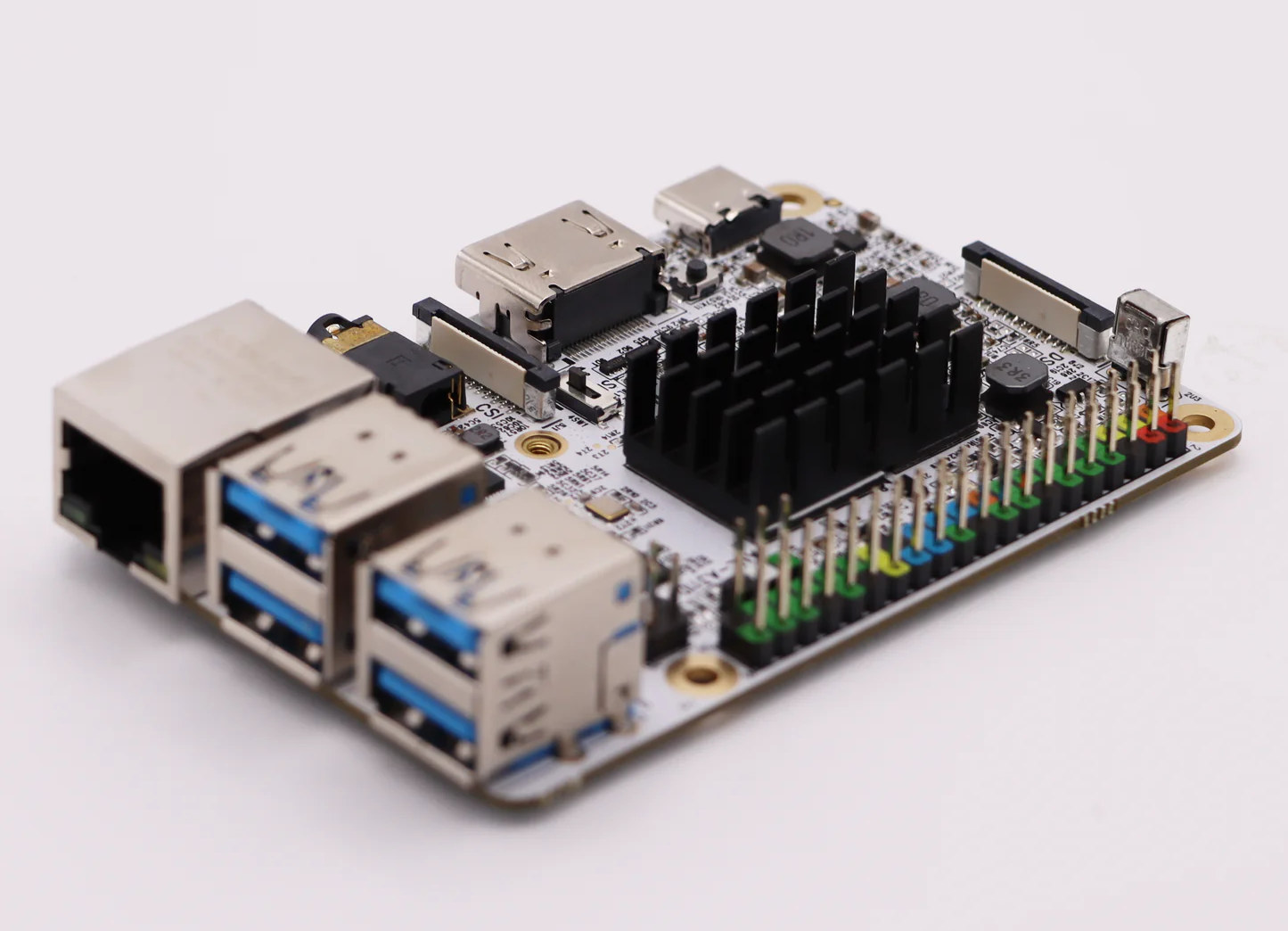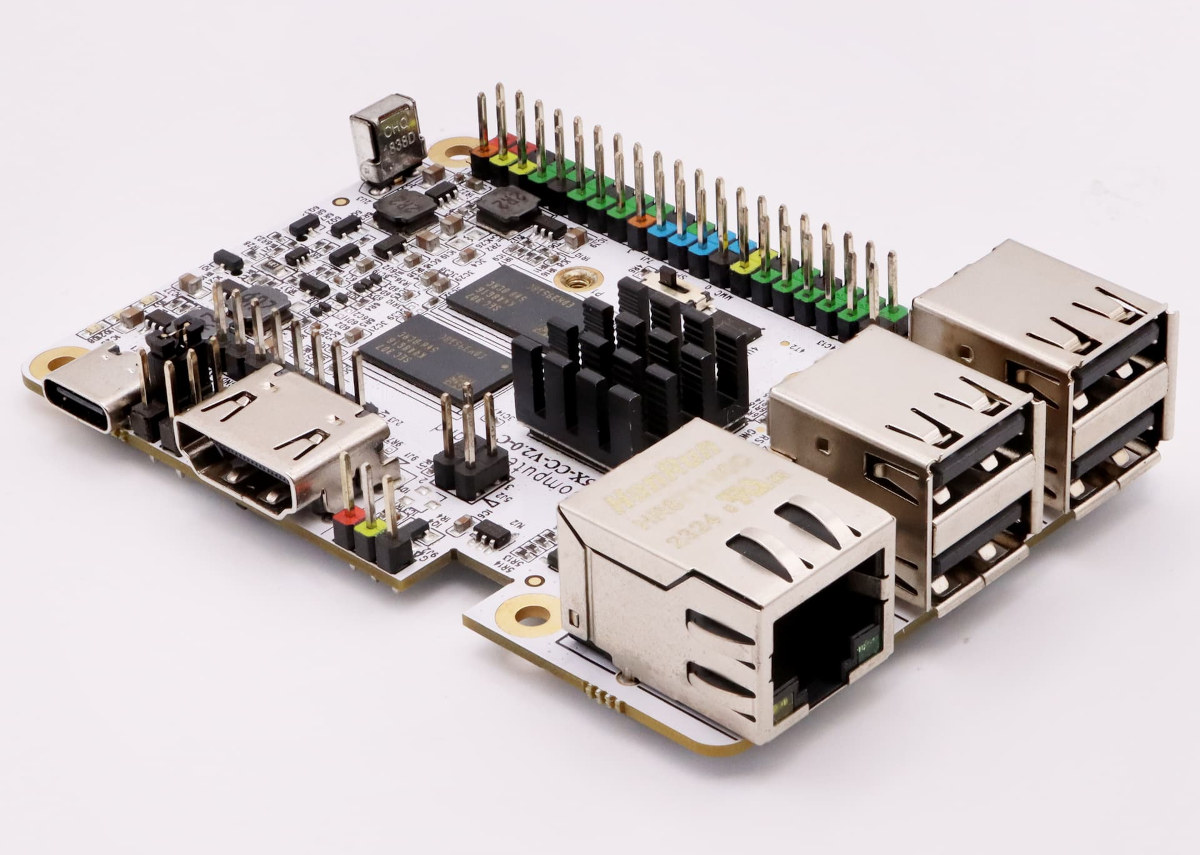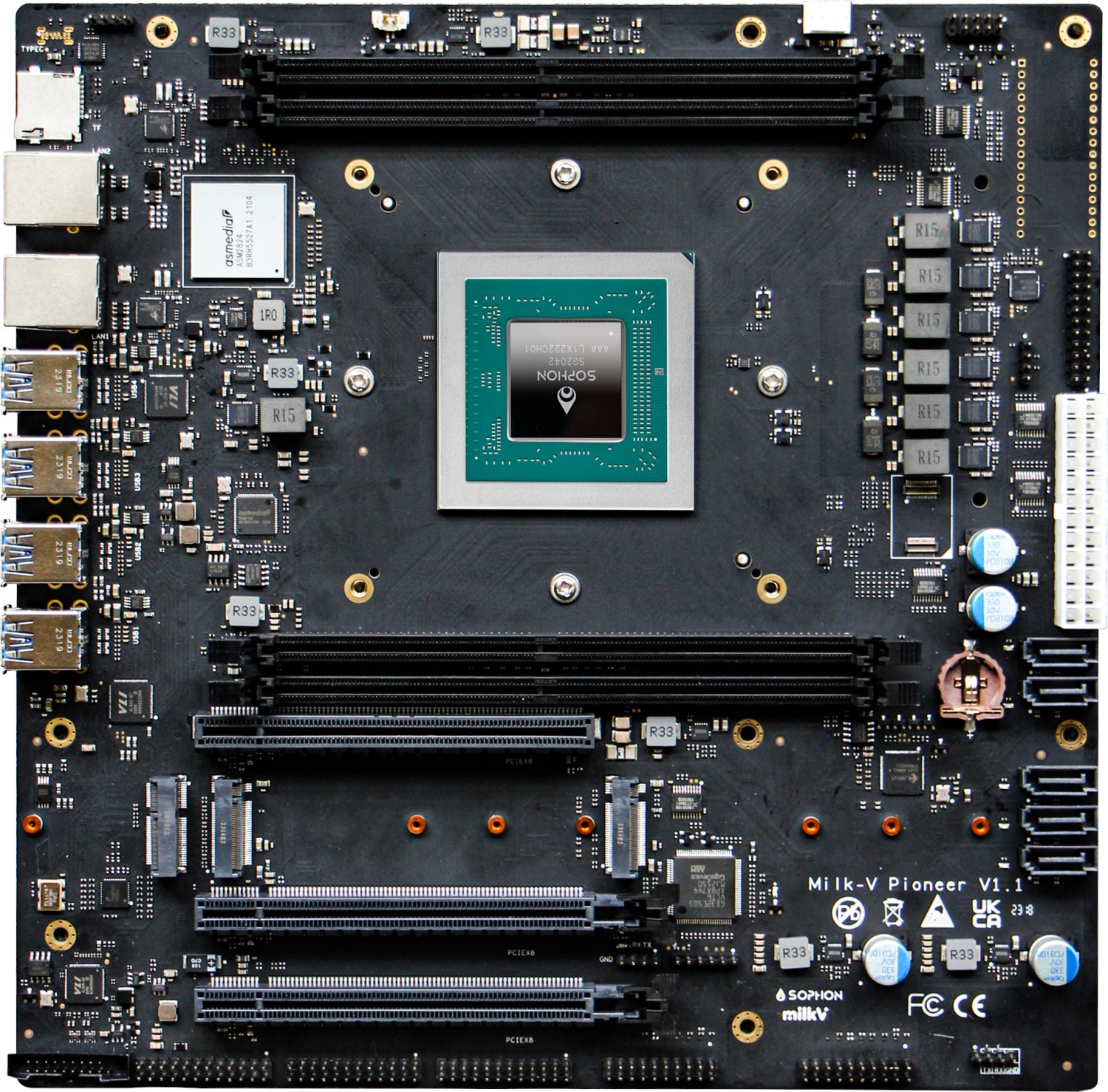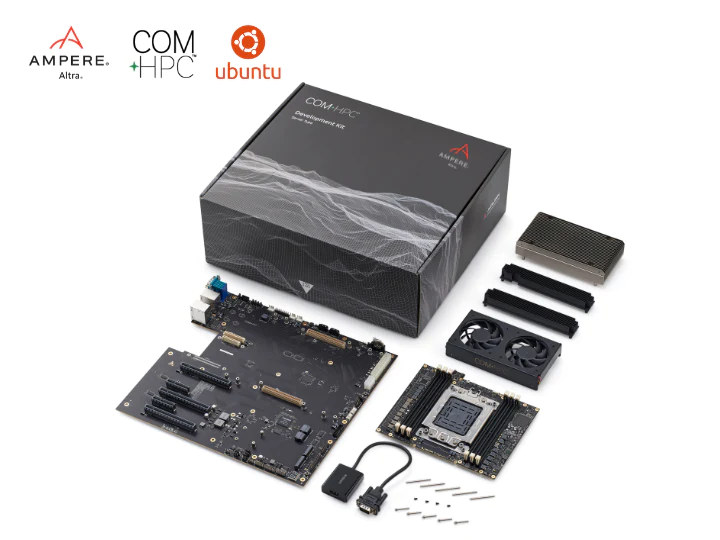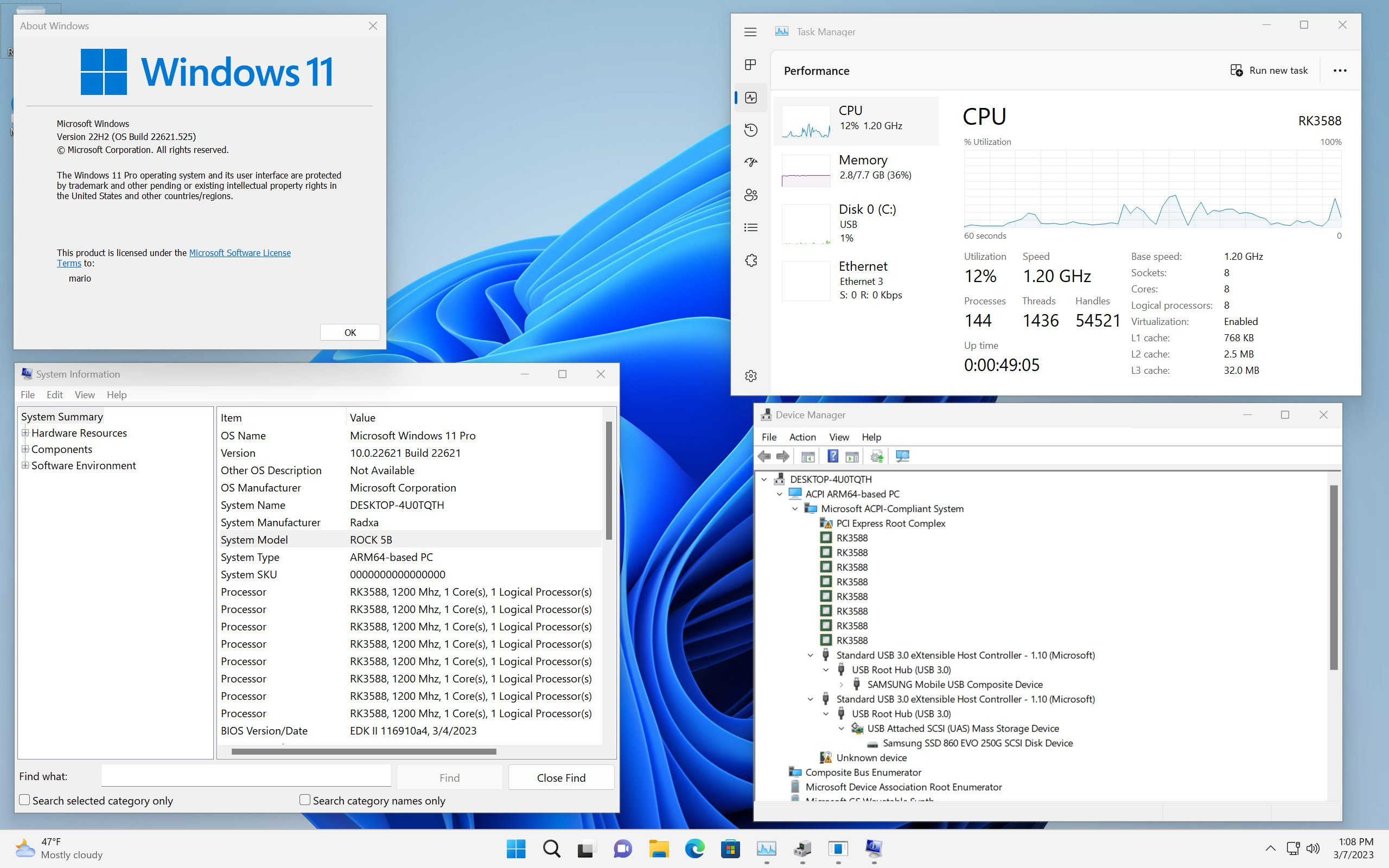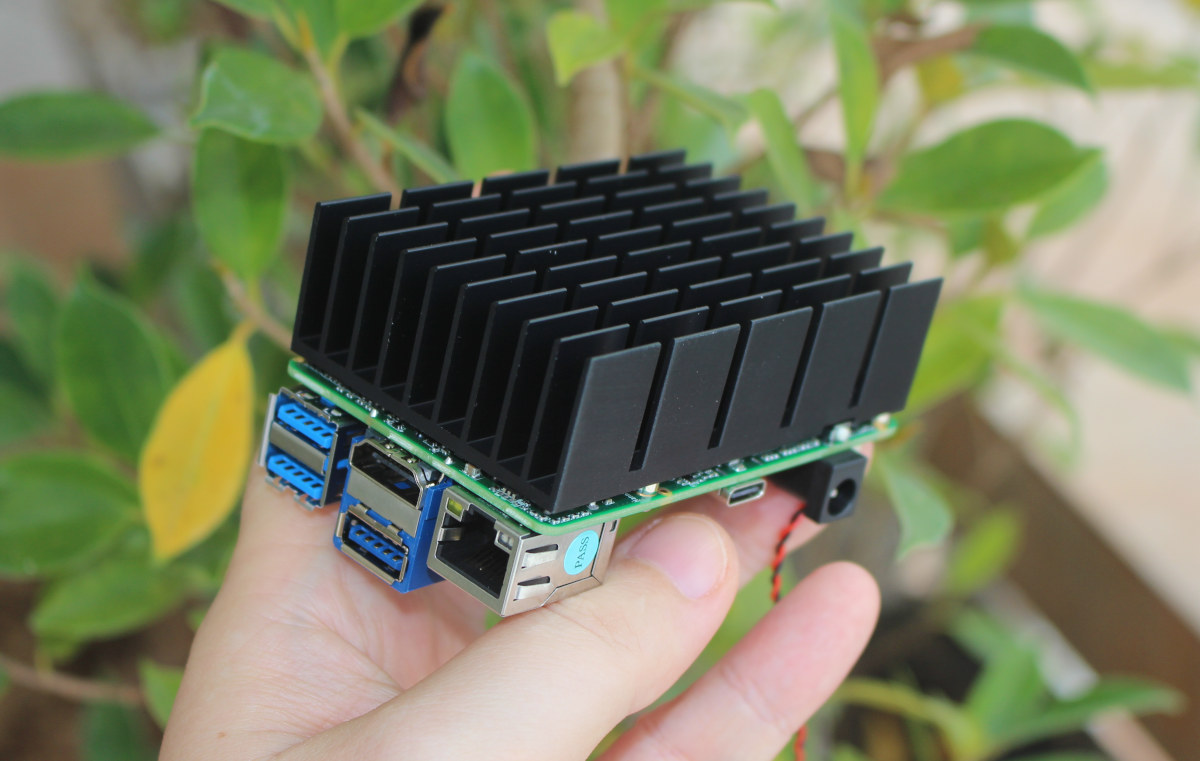iKOOLCORE R2 is an Intel Alder-Lake-N mini PC and network appliance (router/firewall/gateway) that comes with four 2.5GbE ports, up to 16GB RAM, NVMe storage, and the usual HDMI and USB ports, and offered with either Processor N95 or Core i3-N305 SoC. It’s the successor of the iKOOLCORE R1 with four gigabit Ethernet ports and Intel Celeron N5095 or Jasper Lake processor, and the company sent us a sample for testing, so we’ll start with listing the specifications, check out the mini PC and accessories with an unboxing, teardown the multilayer mini PC to check out the hardware design and explain how to update the SSD or install a wireless module, and check whether it can still boot to Windows 11 (default, preinstalled OS) after my adventurous teardown… iKOOCORE R2 specifications Alder Lake-N SoC Intel Processor N95 quad-core processor @ up to 3.4 GHz (Turbo) with 6MB cache, 24EU Intel UHD […]
Libre Computer AML-A311D-CC “Alta” SBC features Amlogic A311D AI processor
Libre Computer has launched the credit card-sized “Alta” SBC, also known as AML-A311D-CC, designed for AI applications with the Amlogic A311D hexa-core Arm Cortex-A73/A53 processor equipped with a 5 TOPS AI accelerator. The board comes with 4GB LPDDR4, a 16MB SPI flash for the bootloader as well as a microSD card slot and eMMC flash module connector for storage, and offers many of the same ports as found on the Raspberry Pi 3 Model B+ with Gigabit Ethernet, four USB 3.0 ports, HDMI output, an AV jack, MIPI CSI and DSI connector, and a 40-pin GPIO header that should work with most Raspberry Pi HATs. AML-A311D-CC “Alta” specifications: SoC – Amlogic A311D CPU Hexa-core processor with 4x Arm Cortex-A73 cores @ up to 2.2 GHz and 2x Cortex A53 cores @ up to 1.8 GHz Built-in Cortex-M4 core for “always-on” processing GPU – Arm Mali-G52 MP4 GPU VPU 4K UHD […]
Libre Computer AML-S905X-CC-V2 SBC directly installs Linux images from the Internet
Libre Computer AML-S905X-CC-V2 “Sweet Potato” is a “new” Amlogic S905X SBC following the Raspberry Pi 3B form factor and that will eventually directly boot Linux images downloaded from the Internet using the Libre Computer OS Tool (LOST). I wrote “new” in quotes because the single board computer is an update to the Potato board (AML-S905X-CC) introduced in 2017 with just a few hardware changes. But that’s because Libre Computer focuses on the software side and all/most of their boards can now run mainline Linux and have support for features such as LOST whose support is set to be implemented by November. Libre Computer AML-S905X-CC-V2 SBC specifications with changes in bold or strikethrough: SoC – Amlogic S905X quad-core Arm Cortex-A53 processor @ 1.5 GHz with penta-core Arm Mali-450MP GPU, and Amlogic Video Engine 10 VPU System Memory – 2GB DDR4 (OEM can request 1GB) Storage 1x microSD card slot with UHS […]
64-core RISC-V motherboard and workstation enable native RISC-V development (Crowdfunding)
There’s now a microATX motherboard and workstation for native RISC-V development based on the SOPHON SG2042 64-core RISC-V C920 processor with up to 128GB DDR4 memory, various SATA and M.2 NVMe interfaces for storage, three PCIe x16 slot for expansion and more. I remember a few years ago, there was a lot of talk about making a workstation for native Arm development instead of relying on x86 machines, cross-compilation, and emulation. So we got hardware like the HoneyComb LX2K, Ampere eMAG, and more recently the ADLINK Ampere Altra Dev Kit to achieve this goal. The RISC-V ecosystem is now getting something similar thanks to the Milk-V Pioneer microATX motherboard and the Pioneer Box that provides a complete 64-core RISC-V workstation with DIMM memory, SATA and NVMe storage, a graphics card, 10GbE networking, a 350W power supply, and more. Pioneer board specifications: SoC – Sophgo SOPHON SG2042 64-core RISC-V processor (T-Head […]
ADLINK Ampere Altra Dev Kit features ATX motherboard with 32 to 80-core Arm COM-HPC CPU module
ADLINK Ampere Altra Dev Kit is an “IoT prototyping kit” based on an ATX motherboard fitted with a COM-HPC-ALT Server Type Size E module powered by an Ampere Altra 32, 64, or 80-core Arm Neoverse N1 server processor, and supporting up to 768GB DDR4 memory. It’s basically the same hardware as found in the Ampere Altra Developer Platform (AADP), but without the tower and power supply, nor optional features like liquid cooling or 10GbE interfaces. Ampere Altra Dev Kit (AADK) specifications and content: Computer-on-Module – COM-HPC Server Type Size E Ampere Altra module with Ampere Altra 32 to 80-core 64-bit Arm Neoverse N1 processor up to 1.7/2.2/2.6 GHz (32/64/80 cores, TPD: 60W to 175W), up to 768 DDR4 ECC memory Mainboard – COM-HPC Server Base carrier board Storage – 2x M.2 slot for NVMe SSD Video – VGA port Audio – 3.5mm audio jack Networking – 1x Gigabit Ethernet Expansion […]
Windows 11 shown to run on Rock 5B Arm SBC (Rockchip RK3588)
Most people will probably want to run Linux on their Arm SBC, but Windows 11 could also be an option with the Rock 5B and other single board computers based on Rockchip RK3588 and other powerful Arm SoCs thanks to the Windows on Raspberry project. The project, also known as “Windows on R” is maintained by Mario Bălănică who recently tweeted a screenshot showing Windows 11 running on the Radxa ROCK 5B SBC powered by a Rockchip RK3588 Arm Cortex-A76A/A55 clocked at 1.2 GHz (instead of the usual 2.2/2.4 GHz), but with USB 2.0/3.0 and display interface apparently working just fine. PCIe appears to be detected, but not working. He also noted that virtualization worked out of the box unlike with Raspberry Pi 4 SBC showing Windows Subsystem for Linux (WSL 2) and PowerShell in the screenshot below. Virtualization also enabled running Android apps in Windows 11 Arm as shown […]
U-boot now supports booting Linux from an HTTP server
Up until now, U-boot would only support the User datagram protocol (UDP) allowing for TFTP and NFS boot, but Linaro has now added support for TCP and HTTP in U-boot in order to boot Linux from common web servers. TFTP boot from U-boot has been supported for years, as around the year 2006 I remember implementing TFTP Linux boot for a Karaoke system in order to lower the BoM cost by selecting a smaller flash device, and I also explained how to boot Linux on a TV box with TFTP back in 2014. This requires installing a TFTP server on your server, which is quite a trivial task, but HTTP servers are omnipresent, so it’s a welcome addition to U-boot. If you want to use HTTP to boot Linux, it needs to be enabled in the U-boot config:
|
1 2 3 |
CONFIG_PROT_TCP=y CONFIG_PROT_TCP_SACK=y CONFIG_CMD_WGET=y |
The top and bottom options are pretty obvious, and the second […]
UP 4000 x86 SBC review – Part 1: Unboxing and first boot
AAEON UP 4000 is a compact Apollo Lake single board computer that’s about the size of a business card or a Raspberry Pi designed for automation, robotics, digital signage, and other space-constrained applications that may benefit from an x86 processor. The company already published some Phoronix benchmarks comparing the UP 4000 SBC against Raspberry Pi 4, NVIDIA Jetson Nano, and the original UP board, but since nothing beats third-party evaluation, AAEON sent a review sample to CNX Software for additional testing. UP 4000 SBC unboxing There are several variants of the board, and I received the UP-APL03X7F-A10-0464 SKU with 4GB RAM, 64GB eMMC flash, and an Intel Atom x7-E3950 quad-core processor. The package includes the board together with a multilingual safety manual that explains you should not immerse the board underwater and should avoid walking on it :). A 12V/5A power supply was also included separately. The power cord was […]

